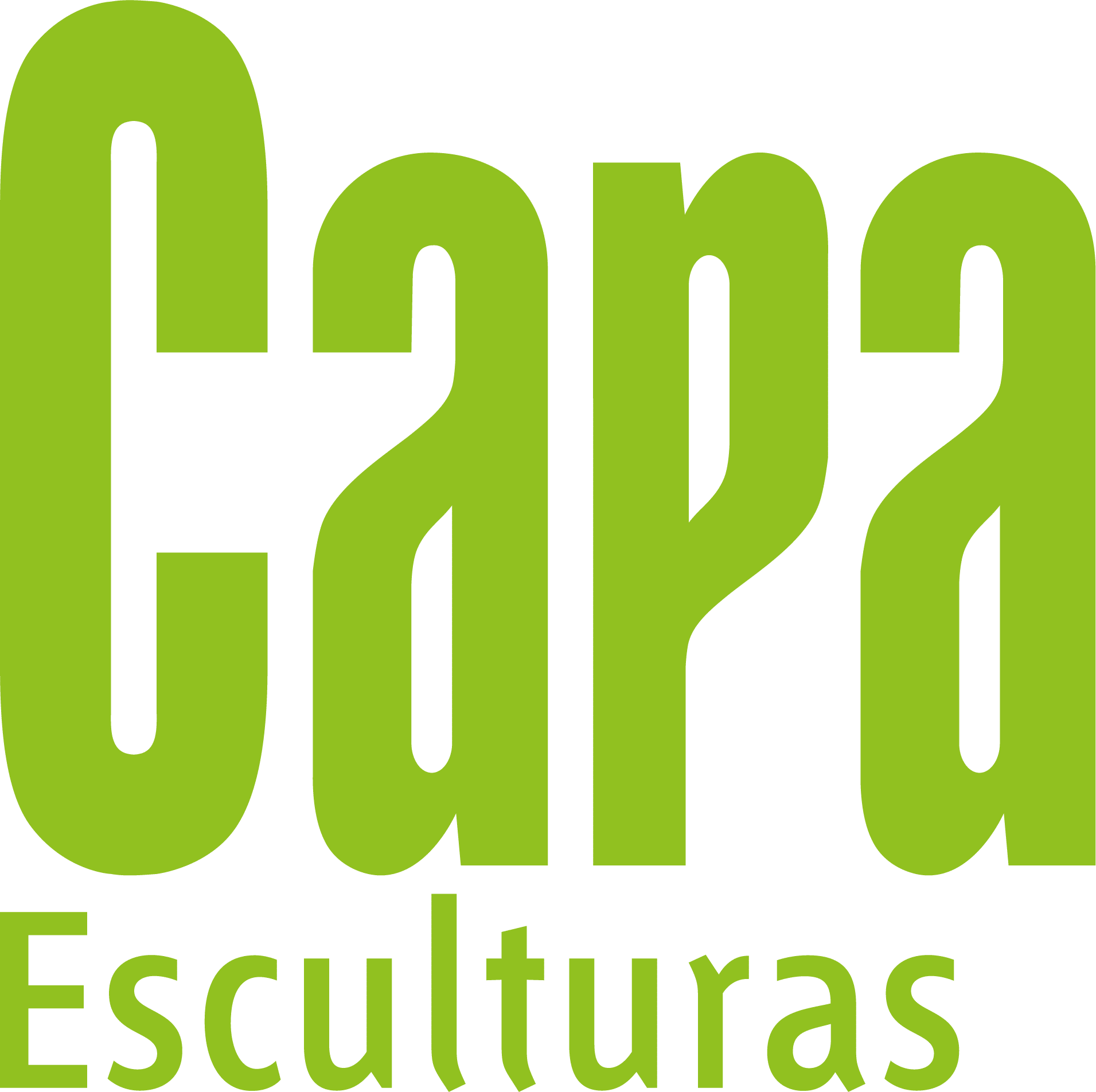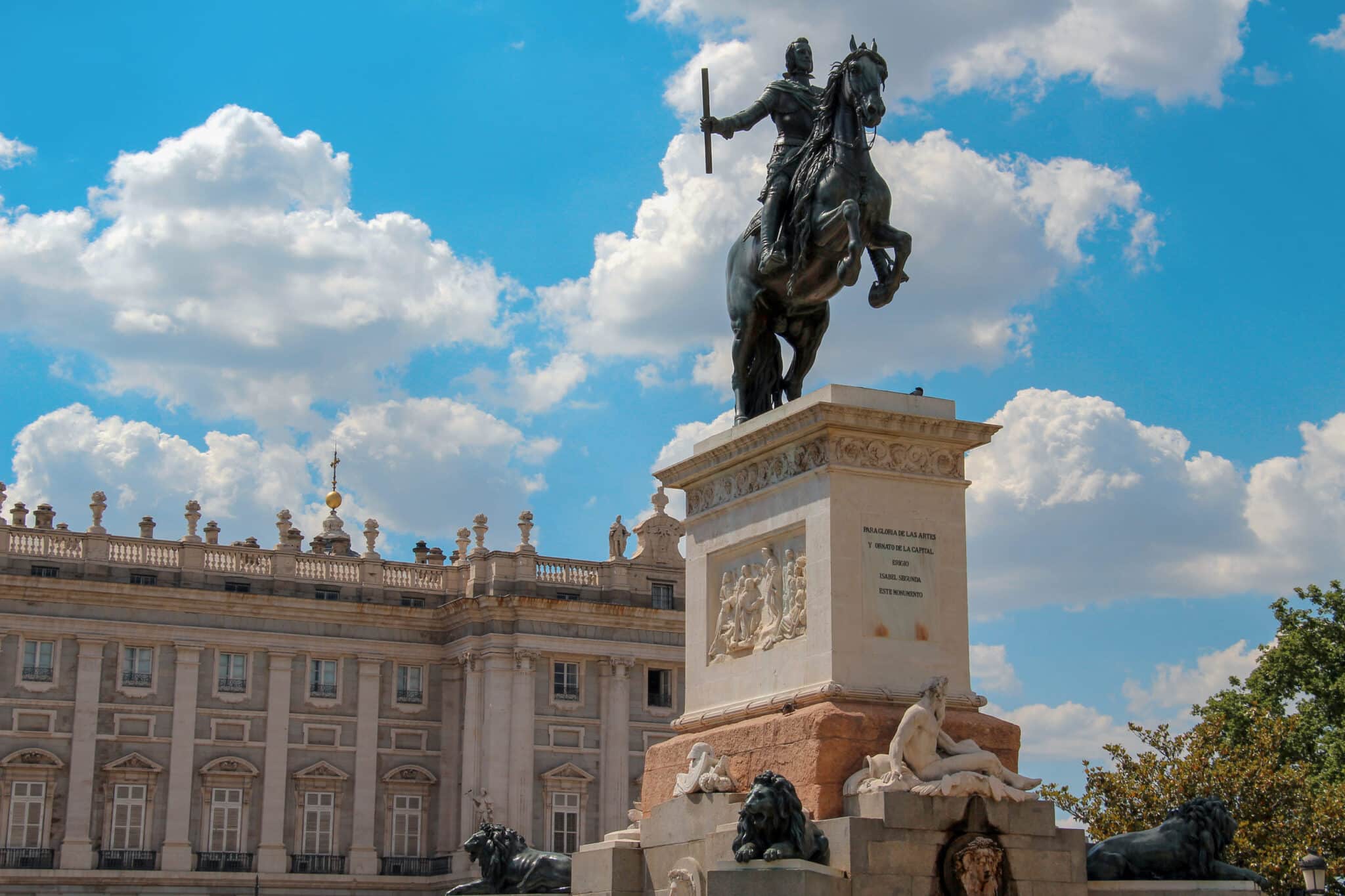Madrid, a city with a vast cultural heritage, is home to some of the most emblematic sculptures in the country. Many of these works, especially the bronze ones, stand the test of time, decorating squares and historic buildings. In this article, we will discover together the 10 most important sculptures in Madrid, ranging from baroque art to surrealism, highlighting the role of Capa Esculturas in the restoration and casting of some of these pieces. Felipe IV in the Plaza de Oriente.
Felipe IV at the Plaza de Oriente
The equestrian sculpture of Felipe IV stands out as one of the most remarkable in Madrid. It was made by Pietro Tacca in 1640, using a design by Velázquez and calculations by Galileo Galilei to achieve something unique. Thanks to this collaboration, the horse is supported only on its hind legs, achieving a technical feat that conveys movement and balance.
Tacca represented Felipe IV as a strong leader, in absolute control. The sculpture is located in front of the Royal Palace in Madrid and has been restored by Capa Esculturas to maintain its majesty.
- Material: Bronze
- Dimensions: 5.35 meters high
- Curiosities: Galileo helped to calculate the equilibrium of the horse.
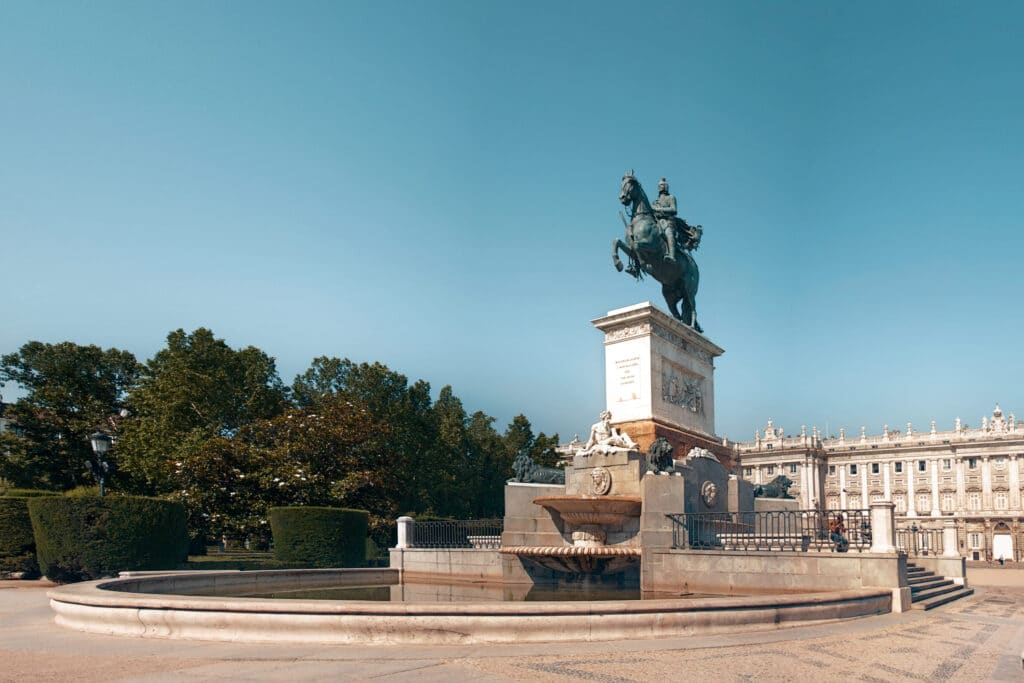
Los leones del Congreso de los Diputados
The lions guarding the entrance to the Congress of Deputies are one of the most recognizable symbols of the city. They were sculpted by Ponciano Ponzano in 1866 and cast with bronze from cannons captured during the African War. These imposing sculptures symbolize strength and protection.
Although the first versions were made in plaster, the Madrid climate quickly damaged them. Thus, the recasting in bronze allowed its permanence in time.
- Material: Bronze
- Dimensions: 2.20 meters high
- Curiosities: The bronze from the cannons was reused to create the sculptures.
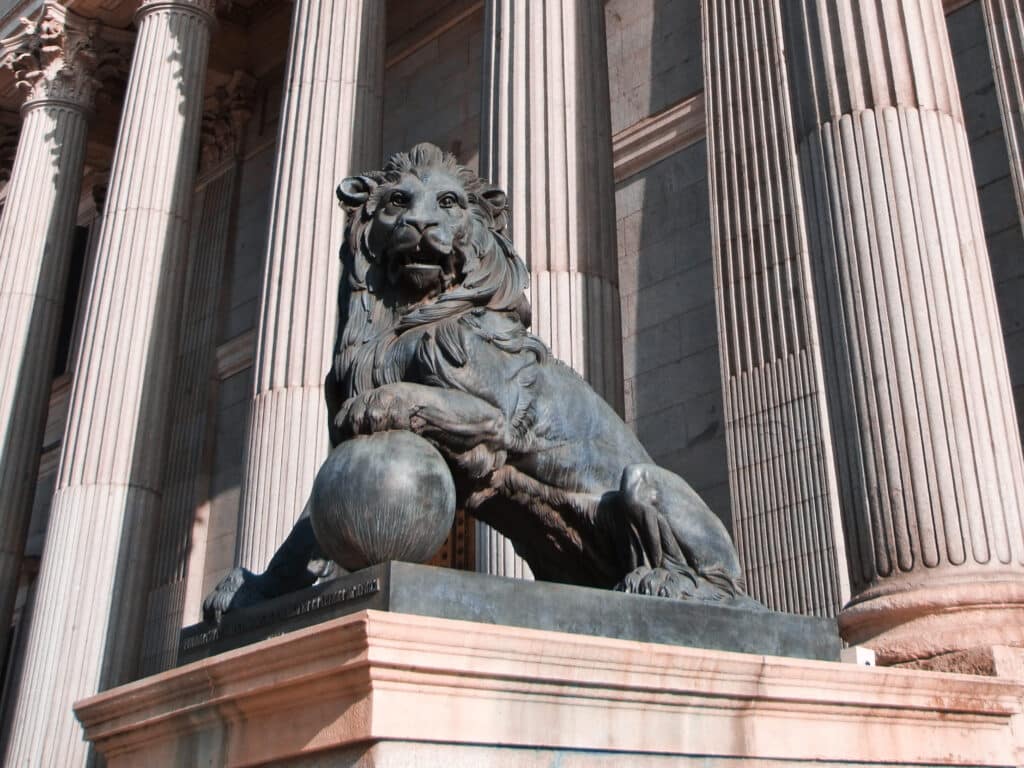
The bear and the strawberry tree in the Puerta del Sol
The Bear and the Strawberry Tree is one of the best known symbols of Madrid and represents the coat of arms of the city. This sculpture, the work of Antonio Navarro Santafé and made in 1967, is located in the Puerta del Sol, one of the busiest spots in the capital.
The bear and the strawberry tree represent the fauna and flora of the region, respectively. The central location of the sculpture makes it a point of reference for locals and tourists.
- Material: Bronze and stone
- Dimensions: 4 meters high
- Curiosities: The bear in the sculpture originally was a bear, according to the history of the coat of arms of Madrid.
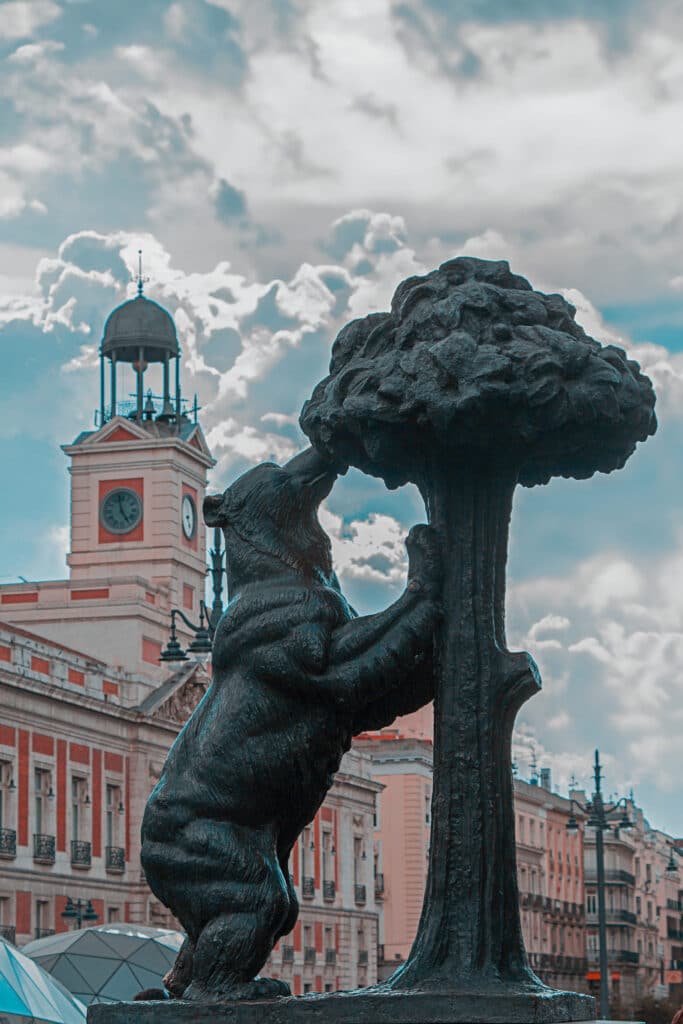
Don Quijote and Sancho Panza in the Plaza de España
The set of Don Quijote and Sancho Panza, located in the Plaza de España, is part of the Cervantes Monument. Lorenzo Coullaut Valera created this work in 1929, and it represents the two most famous literary characters of Spain. Don Quijote appears in a heroic pose, while Sancho Panza follows him faithfully.
This sculpture not only represents the contrast between the idealism and reasonableness of the characters, but it is also a tribute to the most important literary work of Spanish literature.
- Material: Bronze
- Dimensions: Don Quijote: 4 meters high; Sancho Panza: 2.5 meters.
- Curiosidades: Es una de las esculturas más fotografiadas por turistas.
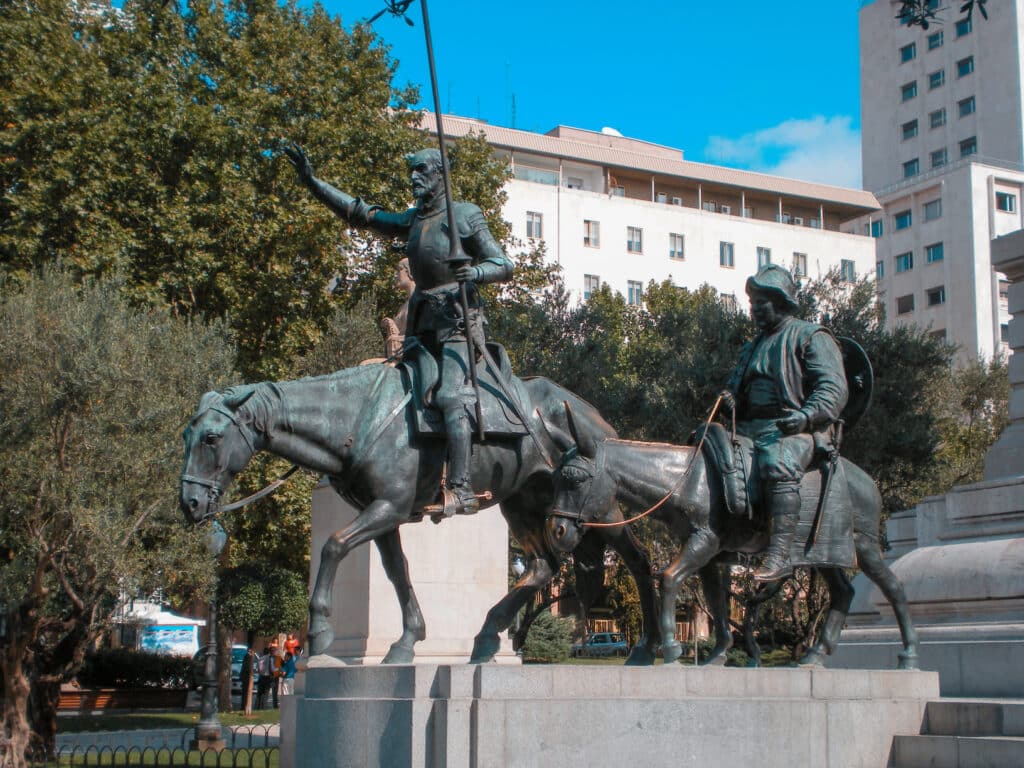
Neptune Fountain in the Paseo del Prado
The Fountain of Neptune, designed by Juan Pascual de Mena in 1786, is one of the best known works in Madrid. The fountain represents the god of the sea, Neptune, driving a chariot pulled by sea horses. Located on the Paseo del Prado, it is a key place for Atlético de Madrid fans.
The fountain was part of the beautification plan of the Paseo del Prado during the reign of Carlos III, known as “the best mayor of Madrid”.
- Material: Marble
- Dimensions: 10 meters high
- Curiosities: During the Civil War, they protected the sculpture to avoid damage.
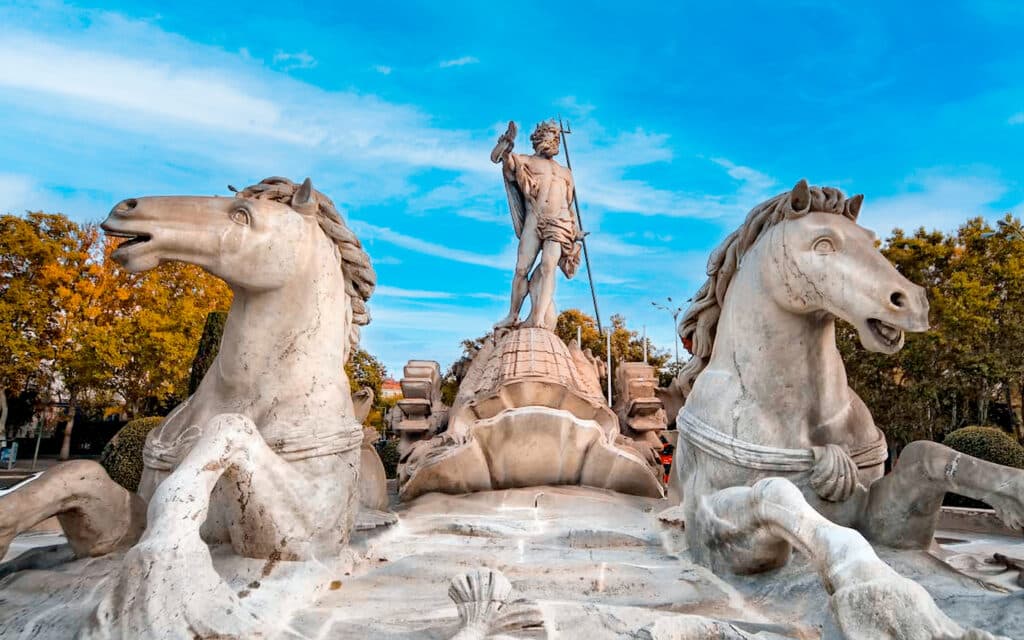
Cibeles Fountain in Cibeles Square
The Fuente de Cibeles, created in 1782 by Ventura Rodríguez, is one of the most emblematic sculptures of Madrid. Made of marble, it represents Cybele, the goddess of fertility, riding a chariot pulled by lions. The Plaza de Cibeles has become a meeting point, especially for Real Madrid fans, who celebrate their victories here.
The fountain has witnessed great moments in the city’s history and continues as a symbol of strength and power.
- Material: Marble
- Dimensions: 8 meters high
- Curiosities: It was covered with sandbags during the Civil War.
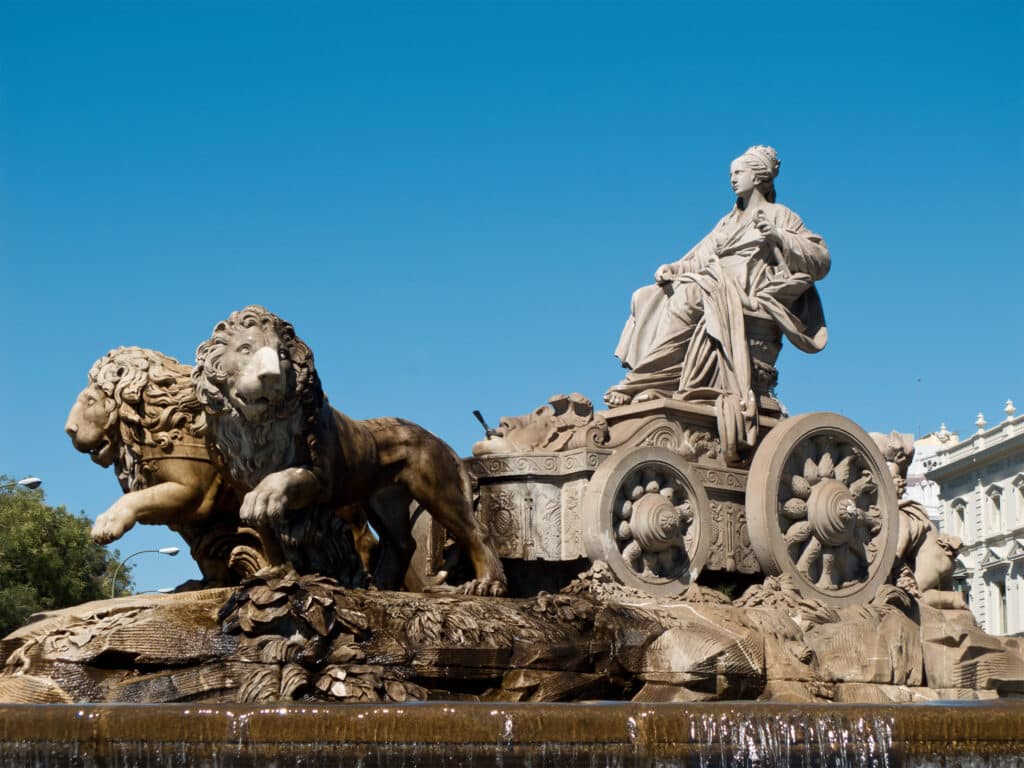
Newton by Salvador Dalí – Plaza Dalí
In the Plaza Dalí, in front of the WiZink Center, stands one of the last great works of Salvador Dalí: the sculpture of Newton, created in 1985. Cast in bronze by Capa Esculturas, it represents Newton crossed by a circle, a characteristic symbol of Dalí, mixing art and science.
This work pays homage to Isaac Newton and his discovery of the law of universal gravitation, while reflecting Dalí’s surrealist creativity.
- Material: Bronze
- Dimensions: 5 meters high
- Curiosities: The circle through Newton represents the eternal cycle of knowledge.
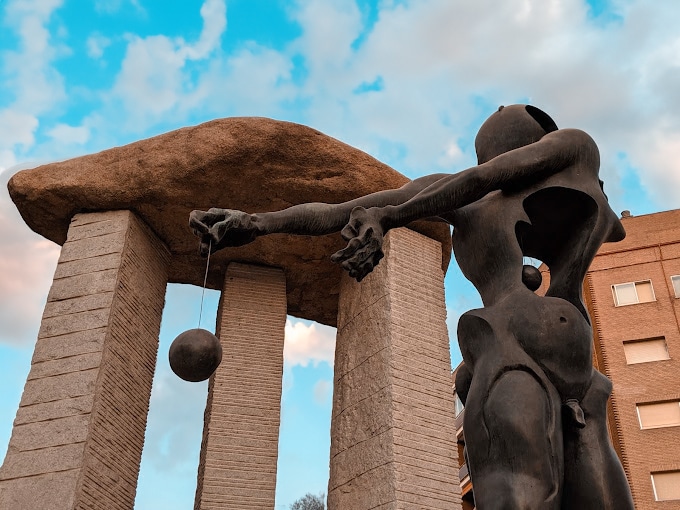
Monument to Alfonso XII at the Retiro Park
The Monument to Alfonso XII, located in the Retiro Park, is one of the largest sculptures in Madrid. Inaugurated in 1922, it was designed by José Grases Riera and consists of a bronze equestrian figure, surrounded by a semicircular colonnade.
Visitors photograph this monument frequently due to its privileged location next to the Retiro pond.
- Material: Bronze and marble
- Dimensions: 20 meters high
- Curiosities: The colonnade houses sculptures symbolizing Peace and Freedom.
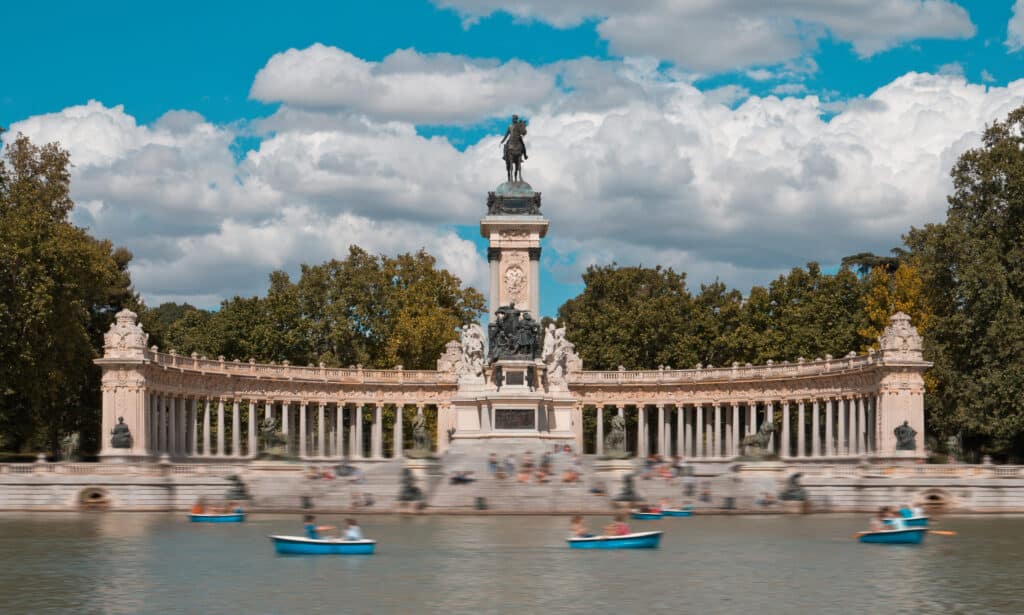
Monument to Simón Bolívar in Paseo de la Castellana
The Monument to Simón Bolívar, located on the Paseo de la Castellana, was created in 1970 by Emilio Laíz Campos. This bronze equestrian sculpture shows Bolivar as a steadfast hero, reflecting the importance of his struggle for the independence of Latin America.
- Material: Bronze
- Dimensions: 3.5 meters high
- Curiosities: Venezuela donated this work as a symbol of brotherhood between Spain and Latin America.
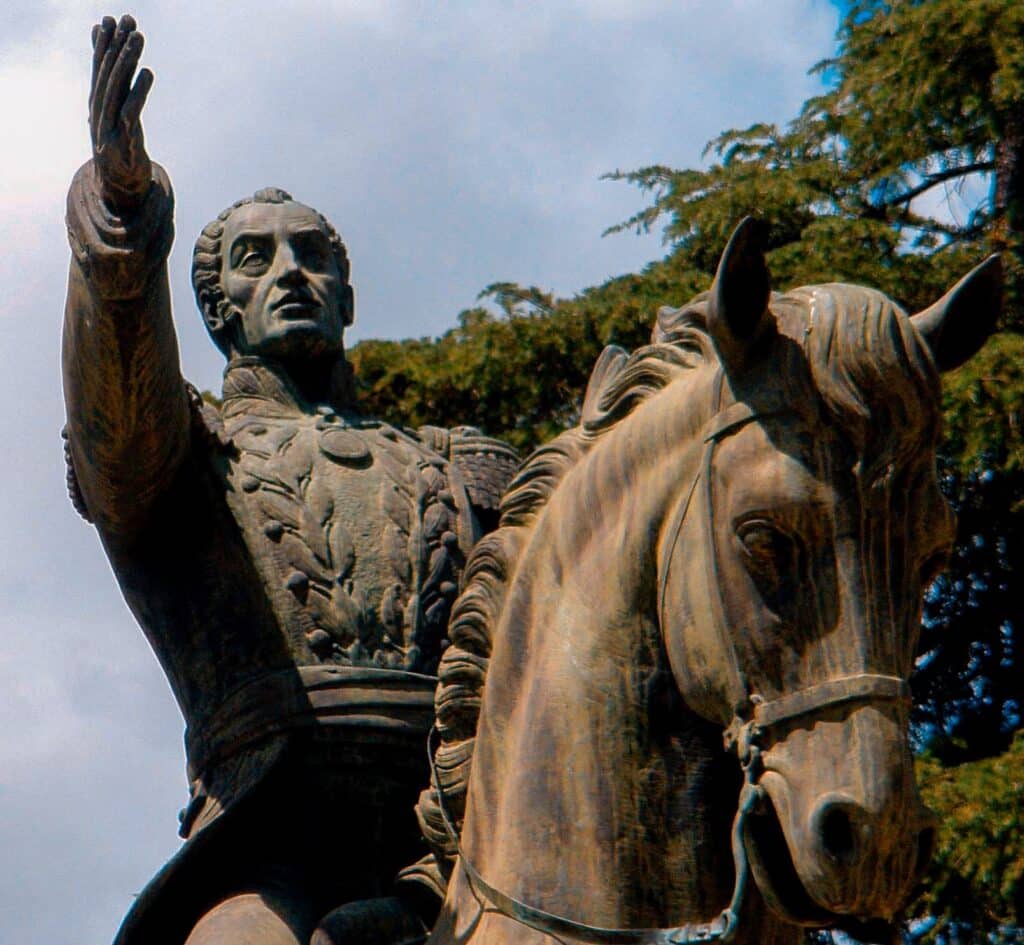
Monument to Miguel de Cervantes at the Plaza de las Cortes
In front of the Congress of Deputies, stands the Monument to Miguel de Cervantes, one of the oldest sculptures in Madrid, created in 1835 by Antonio Solá. This bronze statue shows Cervantes in a solemn pose, a tribute to the author of “Don Quixote”.
- Material: Bronze
- Dimensions: 3 meters high
- Curiosities: It is one of the first public monuments in honor of a writer in Madrid.
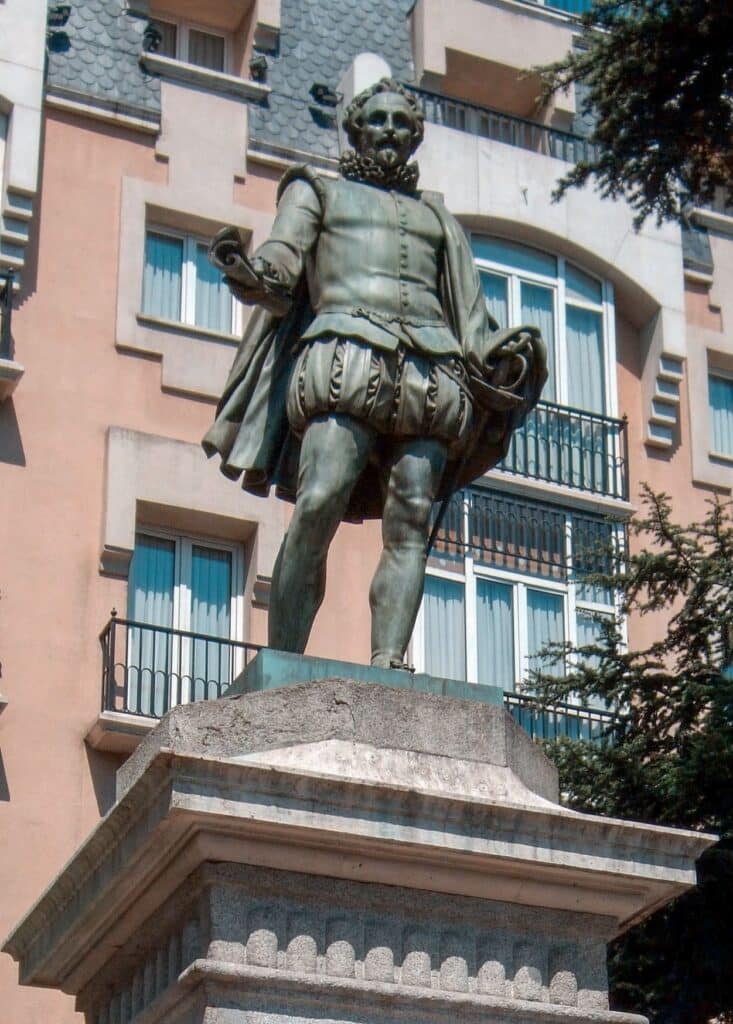
Madrid is an open-air museum, where its bronze sculptures tell the history of the city. Thanks to the work of Capa Esculturas, these valuable works have been restored and preserved for future generations. From the imposing figures of Felipe IV to Dalí’s surrealist Newton, Madrid remains a city that celebrates its artistic legacy.
Here are some reference links if you want more information about the sculptures:
Do you want to see more about Newton by Salvador Dalí? Here is the link.
